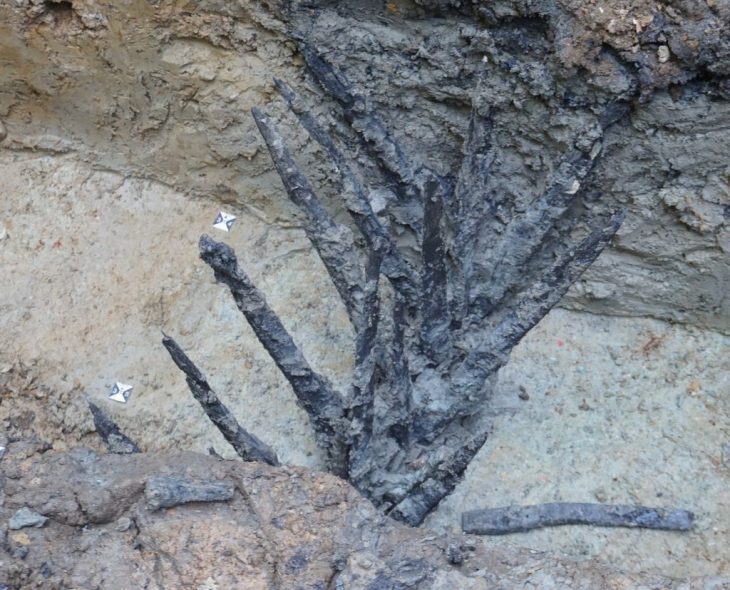Researchers in Bad Ems, western Germany, have made a groundbreaking archaeological revelation. They stumbled upon a remarkable find—the remnants of wooden defenses encircling an ancient Roman military base. This discovery marks the first instance of such wooden fortifications being unearthed, shedding new light on Roman military strategies and defensive architecture.
The fortified structure, equipped with sharpened wooden stakes resembling early forms of barbed wire, was designed to deter and repel enemy forces. Historically mentioned in ancient texts, including accounts by Caesar, these defensive fortifications had remained elusive in terms of physical evidence until now.
The discovery was made possible through the collaborative efforts of Frankfurt archaeologists and Dr. Peter Henrich from the General Directorate for Cultural Heritage of the German federal state of Rhineland-Palatinate. Their excavations uncovered two previously unknown military encampments situated near Bad Ems, strategically positioned on either side of the Emsbach valley.
The genesis of this remarkable find traces back to observations made by a keen-eyed hunter who noticed subtle color variations in a grain field, hinting at buried structures beneath the surface. Subsequent drone photography and geomagnetic scans confirmed the presence of extensive double ditches forming the defensive perimeter of a massive Roman camp spanning eight hectares. The camp, intended to be permanent, featured 40 wooden towers, showcasing the Roman Empire’s strategic military planning.

A smaller adjacent camp, located a mile away, revealed the existence of the unique wooden spike defenses—a testament to Roman engineering and defensive ingenuity. Further analysis suggests that the Romans were prospecting for silver deposits, evidenced by fire remains and melted slag initially mistaken for smelting operations.
Historical accounts by the ancient historian Tacitus detail Roman Governor Curtius Rufus’s unsuccessful silver mining endeavors in the region in 47 A.D. The heavily fortified base and defensive measures were a testament to the Romans’ anticipation of substantial riches, although their mining efforts ultimately proved futile until millennia later when a rich vein of silver was discovered in 1897.
Excavations and research, led by esteemed archaeologists Markus Scholz, Daniel Burger-Völlmecke, and Peter Henrich, are poised to uncover more insights into this intriguing chapter of Roman history. The ancient wooden spikes, now preserved at the Römisch-Germanisches Zentralmuseum in Mainz, stand as tangible relics of a bygone era, offering a glimpse into the military strategies and ambitions of the ancient Roman Empire.
The story of these ancient wooden defenses, once intended to safeguard untold riches, now serves as a captivating narrative of archaeological perseverance and discovery, enriching our understanding of ancient civilizations and their enduring legacies.